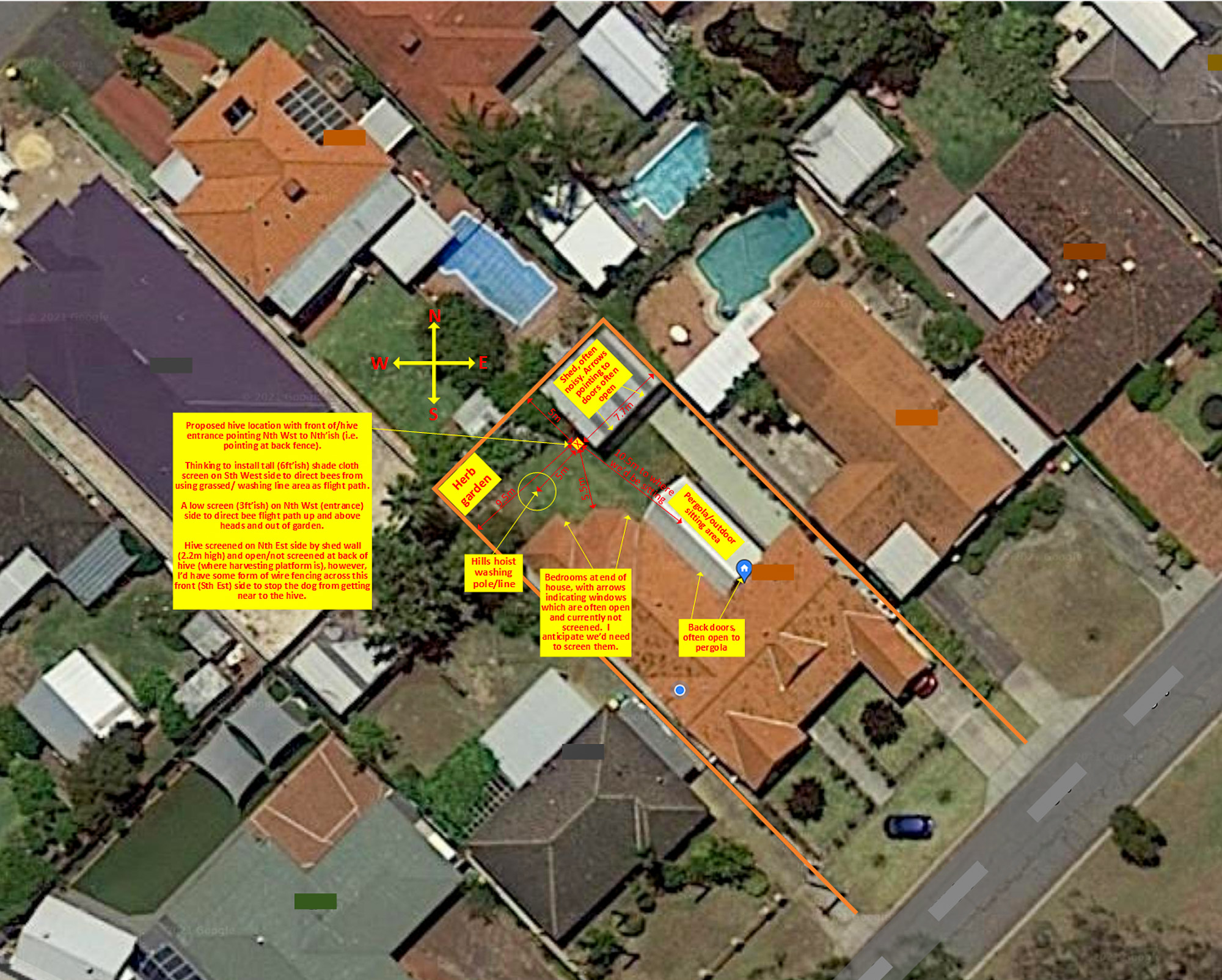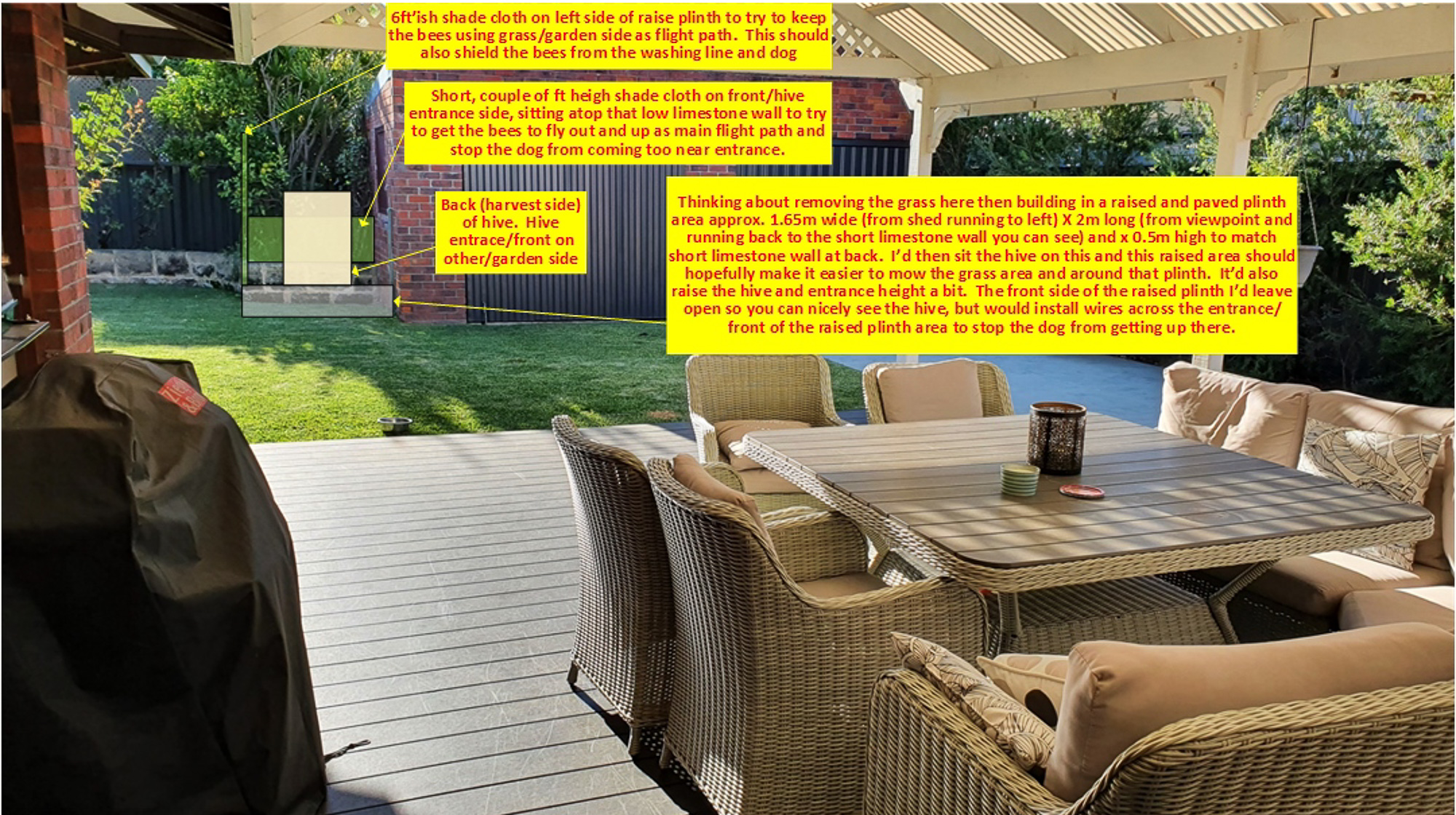What is, and why Flow Hive?
To really understand what the Flow Hive is I suggest you check out the Flow Hive website or simply Google them. But, as a quick intro, the Flow Hive comes with a preformed plastic cell matrix that has a small gap in the middle, between the left and right halves of the cells. The industrious bees then bridge the gaps with wax and go about using the newly joined, complete cells, to make honey. When it comes time to harvest, you simply insert a key and twist. This forces the two halves of the cell matrix to shift slightly, breaking the wax bridge and allowing the honey to flow down, through the middle of the frame and ultimately out to the front of the hive where it’s harvested – simply by sticking a jar under a pipe.
I love this quote from Agatha Christie:
I don’t think necessity is the mother of invention. Invention, in my opinion, arises directly from idleness, possibly also from laziness – to save oneself trouble.
I’m not sure the Flow Hive creators had this quote in mind when coming up with the design concept, but from my research, I’ve read that Cedar, the primary inventor of the Flow Hive, disliked beekeeping using traditional hives and practices due to the disruption to the bees, the effort it took and the mess it made. Well, 10 years of prototyping later, with the final piece of design inspiration coming from Stuart, Cedar’s dad, the Flow Hive was born and placed on Indiegogo for crowd-funding.
The Flow Hive guys were hoping to raise $US 70,000 and hit their target within 8 minutes, going on to raise $US 12.2 million by the end of the campaign! This still sits in the Top 50 most successful crowdfunded campaigns of all time!
But, can I actually fit a Flow Hive into my backyard?
Whilst we’re fortunate enough to have a largish block, around 850m2, we’re in the middle of suburban Dianella. Surrounded on three sides by neighbours, our City Of Stirling council regulations state:
Beekeeping is permitted within the City of Stirling under the following conditions:
- The beehive is at least 10 metres from any footpath, street or public place.
- The beehive is at least five metres from the property boundary.
- The beehive is screened or positioned to ensure that the bees do not create a nuisance or pose a threat to the public.
- Keeping three or more beehives requires a permit.
I was surprised. These council regulations are actually pretty simple. I don’t even need to seek approval for it as I’m under the 3 hive limit. Note, I do need to register with the WA Department of Primary Industries as bees are considered as livestock and the state wants to ensure that we keep WA free of the many pests and viruses that threaten global bee populations.
Knowing the regulations it was pretty clear that the beehive would have to effectively sit in the middle of the backyard. So, I came up with the following plan which I sought feedback on from the local beekeeping community via Flow Hive forums.


As you can see from the above pics, I had figured out where I could place the hive within regulations, however, I had a bunch of concerns about how the bees might react to us and the dog sharing the backyard with them. My initial plan was to install screening, probably using shade cloth, to separate the bees from us and force them to fly up and over the screens – i.e. raise their flight paths about our heads.
After receiving forum feedback, the general advice was “Dude, you’re over-thinking it“, well duh, don’t they know who they’re talking to? I’d lain awake for many nights, thinking through and planning strategies to combat all the problems I was likely to face when placing a beehive in the middle of the backyard. The forum experts suggested I just place the hive in the planned location and see what happens. No screening necessary, but they did suggest I face the hive entrance, at the rear of the hive, into the corner of the shed wall and garden. This way the ‘guard bees’ that hang out around the hive entrance won’t easily see us moving around the garden and won’t be inclined to get nasty.
Ok, I’m pretty sure I can fit the hive in the backyard. However, I still wasn’t convinced about how best to minimise unwanted interactions between us and the bees. I mean, what would the ‘experts’ on the forums know? I decided I needed to come up with a better solution to influence, or force, the bees flight path, but that’s covered in the next post.